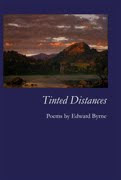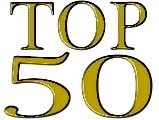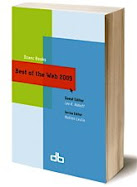As has been the case since the initial year of its appearance in 2007, each December One Poet’s Notes designates a “Poet of the Year.” At the close of each year, a poet whose notable work merited attention during the previous twelve months is selected for acknowledgment and appreciation.
As in the past, a number of outstanding poets have distinguished themselves during the calendar year to a degree that they deserved serious consideration for this annual recognition. However, one poet’s work garnered praise for the content and quality of poetry not only of the present, but also for poems throughout her career and for the promise of work to come. Therefore, Kay Ryan earns designation as the 2011 Poet of the Year.
Readers of One Poet’s Notes are aware of my appreciation for Kay Ryan’s poetry. In the opening of my 2007 review for Ryan’s collection The Niagara River, I wrote:
As in the past, a number of outstanding poets have distinguished themselves during the calendar year to a degree that they deserved serious consideration for this annual recognition. However, one poet’s work garnered praise for the content and quality of poetry not only of the present, but also for poems throughout her career and for the promise of work to come. Therefore, Kay Ryan earns designation as the 2011 Poet of the Year.
Readers of One Poet’s Notes are aware of my appreciation for Kay Ryan’s poetry. In the opening of my 2007 review for Ryan’s collection The Niagara River, I wrote:
When I read Kay Ryan’s poetry, I am sometimes reminded of my first visit to a Jasper Johns retrospective exhibition at the Whitney Museum nearly three decades ago. I recall my initial reactions to all that artwork with images, symbols, and signs that seemed so ordinary upon a quick glance. The paintings of targets appeared merely as concentric circles on a square canvas, the different depictions of American flags or bronzed beer cans seemed nothing more than clever alterations of reality, and the stenciled letters spelling out “red” or “yellow” in colors at variance with their wording represented only an obvious attempt at irony. However, upon closer scrutiny the banal suddenly became a more complicated set of symbols or signs, each inviting viewers to see beyond an icon’s surface meanings and to seek deeper readings in its unconventional appearance. I concluded an additional aspect of wit made the experience linger and even more enjoyable. As John Ashbery has written of Jasper Johns, “One may puzzle over his pictures, but one does not escape them.”
Similarly, Kay Ryan’s work proves puzzling upon opening her new book, The Niagara River; nevertheless, the brief and spare style, familiar from her past collections, remains with the reader and seeps into one’s thoughts about poetry in much the same way Johns’s art has become a reliable part of contemporary consciousness. Ryan’s deceptively straightforward yet complex and smart poems arise from a seemingly simple pattern of slender, usually unbroken, stanzas written in a plain and accessible vocabulary. Despite line breaks that sometimes seem haphazard or normally might create jerkiness as one reads through the poem, this poet appears always in full control, and the lines display a surprising fluency aided by subtle alliteration or other lyrical devices, often including nearly-hidden internal rhymes or near-rhymes.
Like Jasper Johns, Ryan frequently focuses upon objects or language with which we are so familiar that we may have forgotten to pay much attention any longer, forcing a fresh look. Perhaps no other poet, except Ashbery, brings back to life dull and overused terms or platitudinous sayings as often and as well as Kay Ryan. In Ryan’s poetry, clichéd and hackneyed phrases become sources of inspiration. Poems in The Niagara River arise from reexamination of chickens coming home to roost, the elephant in the room, the other shoe dropping, one’s being green behind the ears, and other elements of well-known expressions. However, Ryan manages to infuse new blood into these dead idioms so that they exist with a sense of lively eloquence, clever wit, and original imagery within the lines of her poetry.
Following publication of The Niagara River, Kay Ryan was selected as the U.S. Poet Laureate, a position she held for two terms. Upon closing her service as Poet Laureate in 2010, she released The Best of It: New and Selected Poems (Grove Press), a volume that was widely praised by critics and was named a finalist for the 2011 National Book Critics Circle award in poetry, as well as the 2011 winner of the Pulitzer Prize in poetry. The citation for the Pulitzer Prize notes that her new book reveals a poet who has produced “a body of work spanning 45 years, witty, rebellious and yet tender, a treasure trove of an iconoclastic and joyful mind.”
In a New York Times review of the book, Dwight Garner described Ryan’s poetry: “Kay Ryan’s poems are as slim as runway models, so tiny you could almost tweet them. Their compact refinement, though, does not suggest ease or chic. Her voice is quizzical and impertinent, funny in uncomfortable ways, scuffed by failure and loss. Her mastery, like Emily Dickinson’s, has some awkwardness in it, some essential gawkiness that draws you close.” Adam Kirsch commented for The New Yorker: “Melancholy lucidity is Ryan’s greatest gift, and it can be heard in all her most successful poems. But her most startling discovery is that melancholy, with its tendency to brood and spread, is best contained in a form that is tight, witty, almost sprightly sounding. Her poems are often built on the logic of the pun, taking an ordinary word or dead cliché as a title and then jolting it to unexpected life.” In The Hudson Review David Mason contributed: “Kay Ryan is so disarming, so fresh and original, that she has earned her recent reputation as one of the very best poets among us.”
In addition to the praise for her recent book and the critical recognition for her accumulation of remarkable poetry over the years, Kay Ryan also received a MacArthur Fellowship this year, an honor that indicates continuing support for her future writing as well, as Ryan notes in the video above. The MacArthur Fellowship cited Kay Ryan as “an accomplished poet whose immediately distinctive and tightly woven verse is grounded in incisive explorations of seemingly familiar language, ideas, and experiences. Independent from schools of poetry and literary fashion, her mode of expression is a disarmingly clear and accessible style, characterized by concision, rhyme, wordplay, and wit.” Speaking to the future, the citation goes on to remark: “Drawing from the puns and implications of everyday speech to achieve a wide range of effects, Ryan conveys emotional intensity and intellectual heft in poems that are rarely longer than a page. This inventive poet has already created a distinguished body of work and will continue to compose deceptively simple verse of wisdom and elegance, surprising us with the possibilities of the medium.”
Kay Ryan published her first major book of poetry in 1985 at the age of forty. In the past 25 years she has released a half dozen other books. Over the past quarter century, readers and critics have discovered her delightfully disarming poetry. In addition to this year’s honors, Ryan has received a number of commendations in the past decade, including a Ruth Lilly Poetry Prize, a Guggenheim Fellowship, a National Endowment for the Arts Fellowship, and a Maurice English Poetry Award. She was also elected as a Chancellor for the Academy of American Poets in 2006, where she continues to serve.
Upon her recent completion of two terms as U.S. Poet Laureate, publication of a volume of new and selected poetry, nomination as a finalist for the 2011 National Book Critics Circle Award, selection as the winner of the 2011 Pulitzer Prize, and designation as a 2011 MacArthur Fellow, Kay Ryan has achieved a greater and greatly deserved level of critical acclaim as well as a wider, more appreciative readership, with a promise—as stated in the accompanying video above—of more wonderful work in the future for readers to anticipate.
[Readers are invited to visit posts at One Poet’s Notes in the past that have announced the “Poet of the Year”: “Poet of the Year: John Ashbery” (2007), “Poet of the Year: Mark Doty” (2008), and “Poet of the Year: W.S. Merwin” (2009), “Poet of the Year: Rae Armantrout” (2010).]























1 comment:
Well-deserved!
Post a Comment